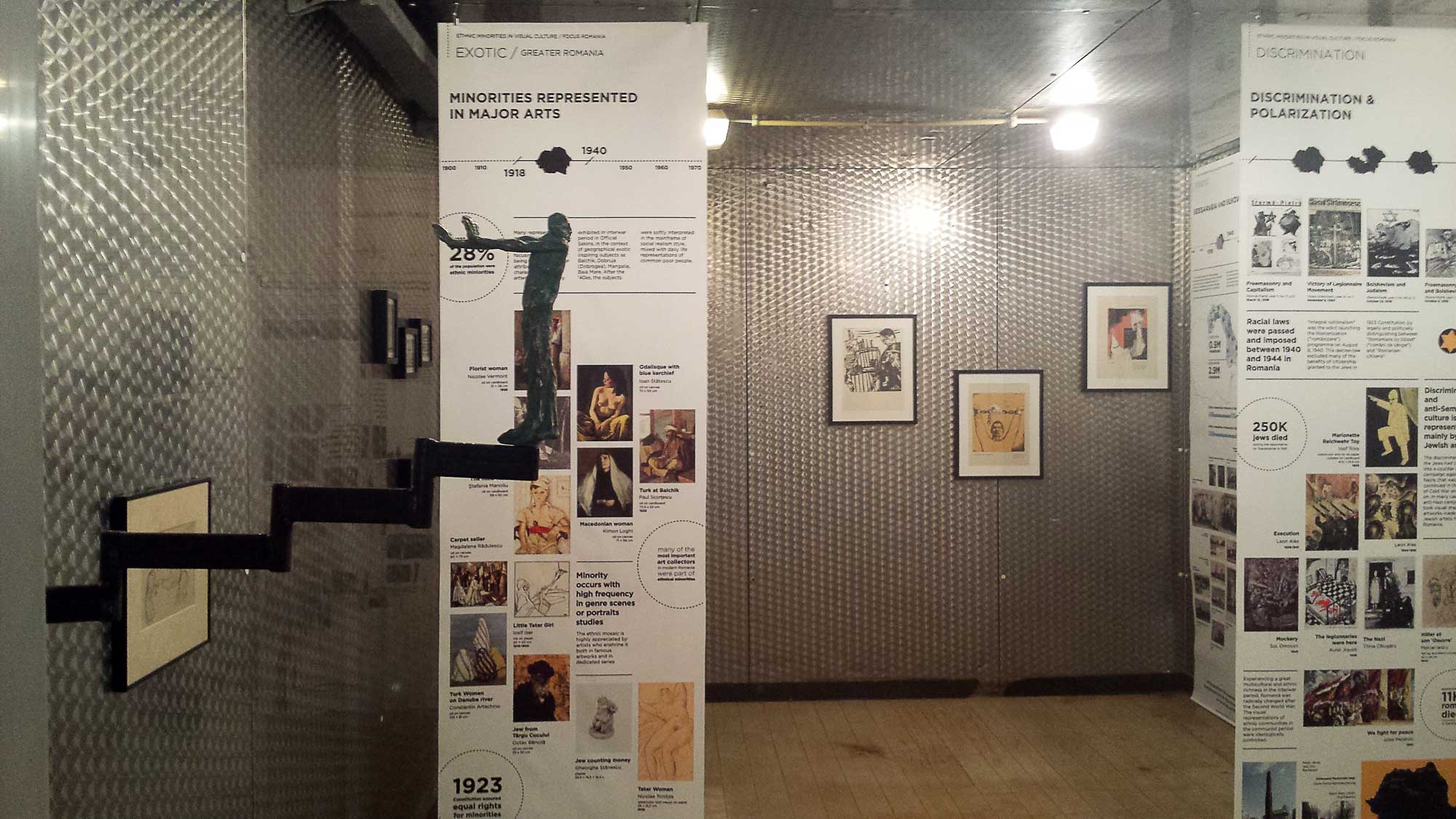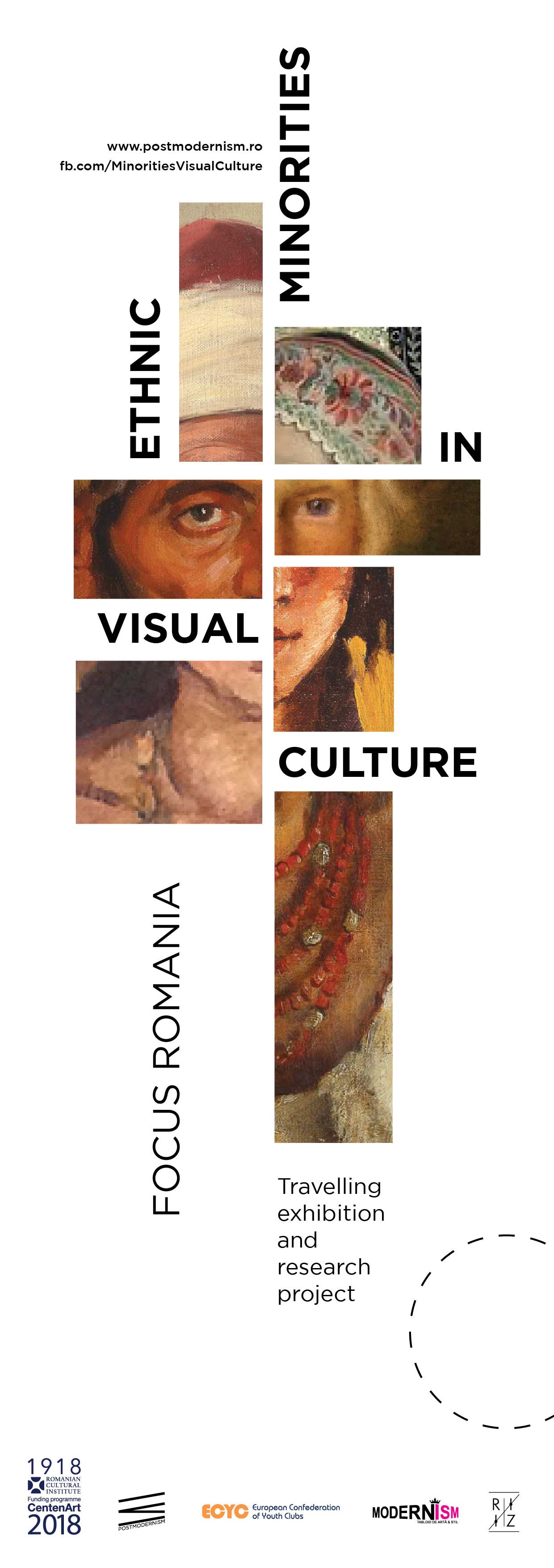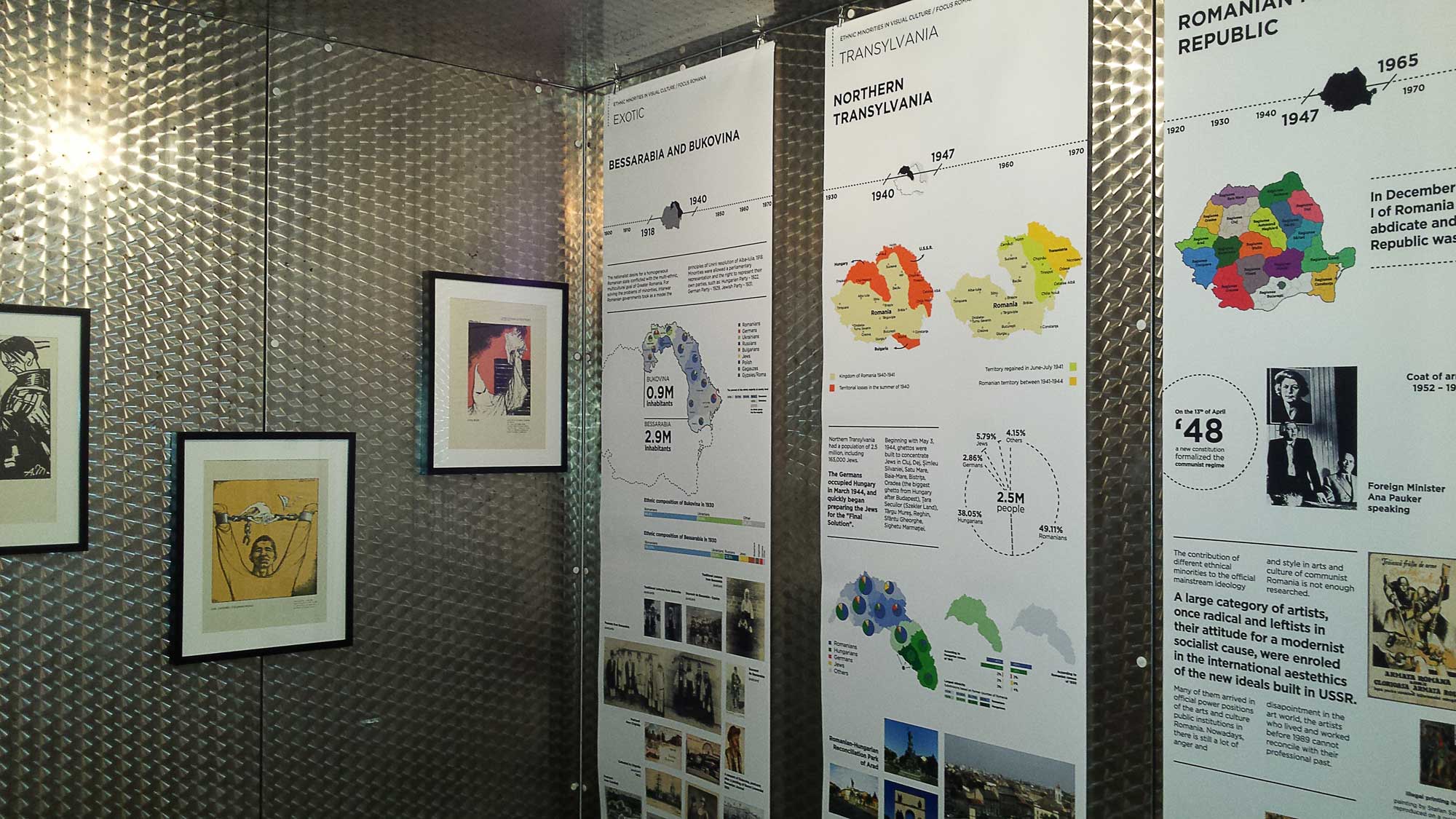An initiative of PostModernism Museum, the project “Ethnic Minorities in Visual Culture - focus Romania” brings into focus the expression of Romanian minorities' typology into visual culture over the 20th Century and until the beginning of the 21st Century, as well as their contribution to the re-establishment of Greater Romania.

The research projected exposed in Brussels and carried out between 1 July-15 October, 2016, funded by the Romanian Cultural Institute through the CentenArt programme, is

evoking 100 since the establishment of Greater Romanian, bringing into focus such concepts as ethnic identity, cultural diversity and nationality under their artistic manifestation throughout this period. The curator is Cosmin Nasui.
“Ethnic Minorities in Visual Culture - focus Romania” targets a dynamic research, including the latest studies in the field, made concrete by presenting to different audiences such art works, period publications, postal cards, art catalogues, memorabilia, sociologic research able to reveal Romanian multi-cultural background along the 20th Century, within the context of its relation to European culture.
The exhibition set up following the research and set up in Brussels during 20 August-4 October, 2016 is structured around representing “old” historical minorities (Jew, Greek, Lipoven, Hungarian, Turk, Tartar, Roma) and the “new” ones, after the 1989 Revolution (Chinese, English, French, Indian, Lebanese), in the Romanian visual culture.
The Romanian modern and contemporary artists' works reveal the red thread of the exhibition, given that during the modern period several works of art became famous reproductions of large circulation on postal cards: portraits of gypsy women; postal cards and picture postcards of the series entitled “Greetings from Romania” edited during the interwar period and circulated until the beginning of the communist era, and focused, most often than not, on the image of minorities' representatives – the Jew, the Gypsy Woman, the Tartars, the Turkish women.

Such an ethnic mosaic was very appreciated by interwar artists who consecrated it both in famous works of art, and in dedicated series such as: the Tartar women of Iser, Tonitza, Max Arnold, the Jews and Gypsy women of Octav Băncilă, Nicolae Grigorescu, Nicolae Vermont, Adam Bălţatu, Ghelman Lazăr, the Turk men and women of Aman, Iser, Artachino, Iancu. As regards the contemporary art, a number of artists represent various minorities and current issues in their works, and, among them, mention should be made of: Daniel Brici,
Vlad Petri, Lucian Munteanu, Iosif Kiraly.
The project targets also a continuous research component through identifying and centralising fragments of recent oral history (comments, testimonials) from visitors, to be subsequently integrated in the exhibition's catalogue.
Details on:
facebook //
postmodernism.ro The research projected exposed in Brussels and carried out between 1 July-15 October, 2016, funded by the Romanian Cultural Institute through the CentenArt programme, is
The research projected exposed in Brussels and carried out between 1 July-15 October, 2016, funded by the Romanian Cultural Institute through the CentenArt programme, is  evoking 100 since the establishment of Greater Romanian, bringing into focus such concepts as ethnic identity, cultural diversity and nationality under their artistic manifestation throughout this period. The curator is Cosmin Nasui.
evoking 100 since the establishment of Greater Romanian, bringing into focus such concepts as ethnic identity, cultural diversity and nationality under their artistic manifestation throughout this period. The curator is Cosmin Nasui. Such an ethnic mosaic was very appreciated by interwar artists who consecrated it both in famous works of art, and in dedicated series such as: the Tartar women of Iser, Tonitza, Max Arnold, the Jews and Gypsy women of Octav Băncilă, Nicolae Grigorescu, Nicolae Vermont, Adam Bălţatu, Ghelman Lazăr, the Turk men and women of Aman, Iser, Artachino, Iancu. As regards the contemporary art, a number of artists represent various minorities and current issues in their works, and, among them, mention should be made of: Daniel Brici, Vlad Petri, Lucian Munteanu, Iosif Kiraly.
Such an ethnic mosaic was very appreciated by interwar artists who consecrated it both in famous works of art, and in dedicated series such as: the Tartar women of Iser, Tonitza, Max Arnold, the Jews and Gypsy women of Octav Băncilă, Nicolae Grigorescu, Nicolae Vermont, Adam Bălţatu, Ghelman Lazăr, the Turk men and women of Aman, Iser, Artachino, Iancu. As regards the contemporary art, a number of artists represent various minorities and current issues in their works, and, among them, mention should be made of: Daniel Brici, Vlad Petri, Lucian Munteanu, Iosif Kiraly.